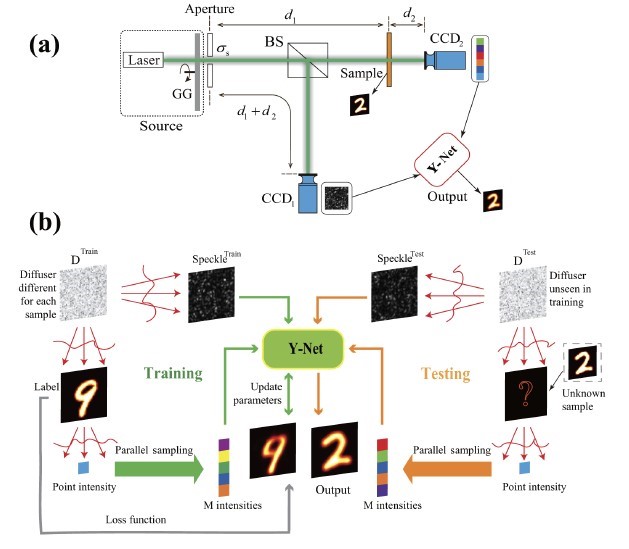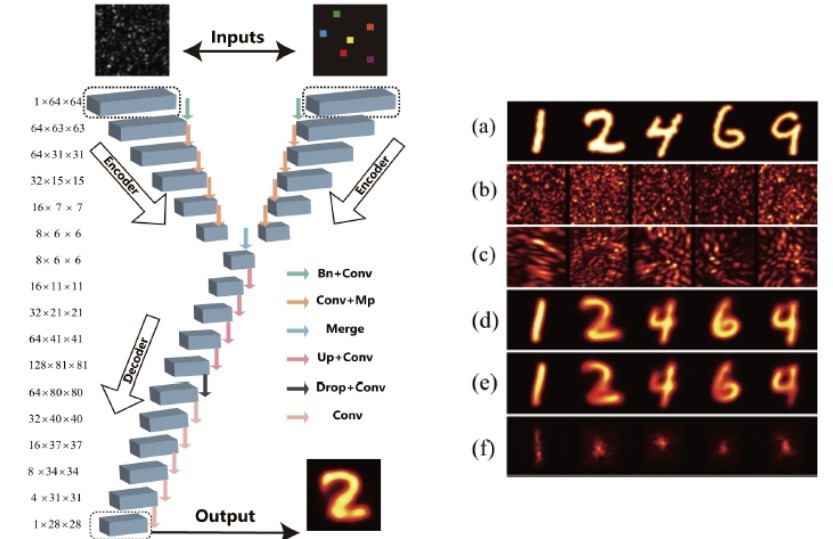Ghost imaging based on deep learning has attracted much attention in optical imaging, and deterministic illumination and multiple measurements are essential for obtaining high-quality reconstructed images. However, in many practical imaging scenarios, such as x-ray and atomic imaging, the illuminating speckle field varies dynamically.
Recently, the researchers from the Shanghai Institute of Optics and Fine Mechanics, Chinese Academy of Sciences, proposed a dynamic decoding deep learning framework for Fourier-transform ghost imaging. This method works well under both deterministic and indeterministic illumination, and the sample will be illuminated only once to achieve high quality images. The result was published in Optics Express.
In their study, the research team made full use of the characteristics of the Fourier transform ghost imaging system and proposed a dynamic decoding neural network model(Y-Net).
They found that, as long as the statistical characteristics of the speckle field in the training process remained unchanged, high quality image of a sample could be reconstructed with only one exposure.
Due to the dynamic decoding characteristics of the network, the network could be trained with simulation data, and the spatial distribution of the training speckles could be completely different from the experimental speckles. Thus, it could avoid the common difficulty of insufficient training data in learning-based imaging methods.
In addition, benefited from the end-to-end characteristic of Y-net, the image of a sample could be achieved directly from the data collected by the detector, without extra processing, such as initial input image estimation, subsequent phase recovery, etc.
This approach is particularly important to high-resolution x-ray applications, in which the exposure should be reduced as much as possible considering the radiation damage of samples. Results show that the sample image can still be obtained when the photon per pixel collected by the detector is less than 1 photon.
The related research was supported by the National Natural Science Foundation of China and the National Key Research and Development Program of China.

Figure 1. Overview of the ghost imaging method based on Y-net. (Image by SIOM) 
Figure 2. Y-Net architecture and related experimental results. (Image by SIOM)
Article website
https://doi.org/10.1364/OE.395000
Contact:
Dr. CAO Yong
Shanghai Institute of Optics and Fine Mechanics
Email: caoyong@siom.ac.cn